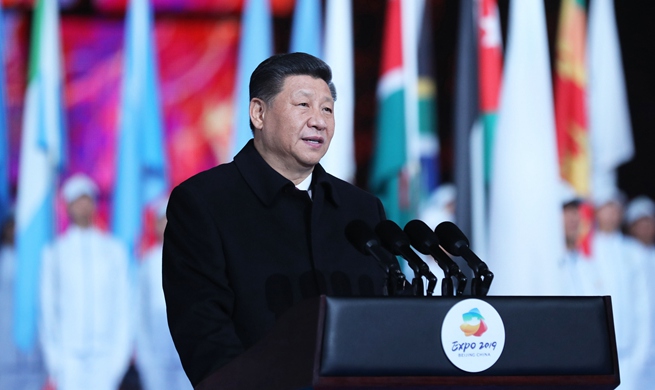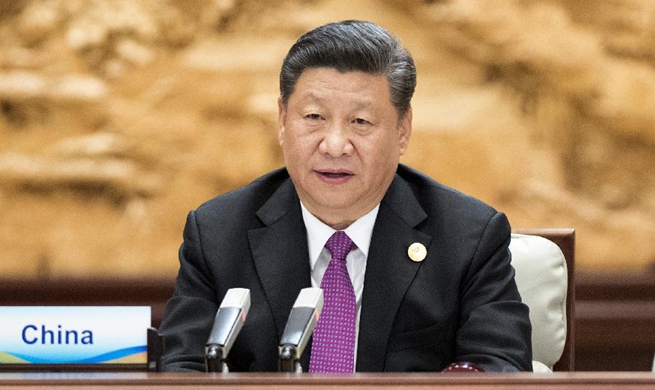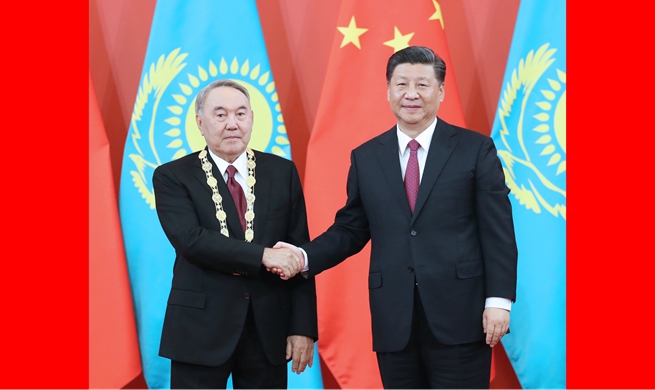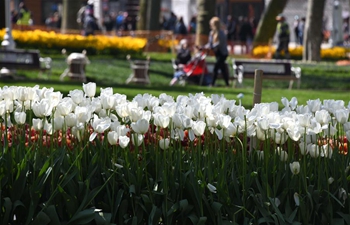by Mahmoud Fouly
CAIRO, April 28 (Xinhua) -- With the flourishing archeological discoveries in several provinces in Egypt this year, the Tourism Ministry has been joining the Antiquities Ministry in organizing ceremonial events to announce the discoveries as part of a plan to boost tourism that is currently recovering in the country after years of recession.
Both ministries cooperate to invite foreign media outlets to cover the discoveries and many foreign ambassadors to witness them, considering them messengers to convey a message to the whole world about Egypt's safety and unique antiquities.
On the World Heritage Day of April 18, the ministries marked the international event by announcing the discovery of a large 3,500-year-old rock-cut tomb on the Nile River's west bank near the Valley of Kings in Upper Egypt's monument-rich province of Luxor.
"These various discoveries, along with the different exhibitions of Egyptian antiquities abroad, attract more tourists to come to Egypt," Tourism Minister Rania al-Mashat told Xinhua during the ceremony attended by the Egyptian prime minister and other officials, celebrities and about 20 foreign ambassadors.
"We try to tell the whole world that Egypt's different provinces constantly impress us with new discoveries," she added.
Later in the afternoon, Antiquities Minister Khaled al-Anany invited all attendees, including local and foreign media outlets, to visit colorful Nefertari tomb, which belongs to the wife of legendary ancient King Ramses II.
In the evening at Luxor Temple on the east riverbank, they held a ceremony to unveil a large 60-ton, 12-meter-tall colossus of Ramses II after its restoration and re-erection to be standing next to five other statues at the temple's pylon.
The next day, they opened Opet Temple for the first time for visitors after its recent restoration at Luxor's Karnak Temple Complex on the east bank.
"We have a very active excavation season this year as we have made several discoveries over the past few weeks," Egyptian Antiquities Minister Khaled al-Anany told Xinhua at the archeological site in Luxor, noting that such discoveries "boost cultural tourism in Egypt."
The event in Luxor came a few days after the Antiquities Ministry opened at Saqqara necropolis, near the Pyramids of Giza, the newly discovered tomb of Khuwy, a nobleman who lived at the end of the Fifth Dynasty of the Old Kingdom, some 4,500 years ago.
In February, in the desert of Tuna el-Gebel necropolis of Minya province southern Egypt, the ministry announced the discovery of a tomb including more than 50 mummies in a perfect condition of preservation.
"Cultural tourism has been declining worldwide while increasing in Egypt," Mashat said in a a statement.
Tourism is one of the main sources of national income and foreign currency in Egypt besides exports, remittances of Egyptian expatriates and the revenues of the Suez Canal.
The industry brought Egypt about 13 billion U.S. dollars in revenues in 2010 alone, when some 14.7 million tourists visited the country. It is now recovering from a later recession caused by political turmoil and relevant security challenges that resulted from the ouster of two heads of state in 2011 and 2013.
While excavation works are going on continuously in Egypt, the giant Grand Egyptian Museum (GEM) is currently being constructed on an area of 491,000 square meters just two kilometers from the Great Pyramid of Giza.
The museum complex is expected to feature over 100,000 ancient artifacts, about 3,500 of which belong to famous pharaoh Tutankhamun, and is expected to be the top museum in the Middle East and one of the largest in the world.
The museum is also expected to promote tourism in Egypt and to become a main destination for Egyptologists and archeologists from different parts of the world.
"We have growing archeological discoveries in all provinces, and the largest gift Egypt will offer the world is the opening of the Grand Egyptian Museum by the end of 2020," the tourism minister said in a recent statement in Luxor.













